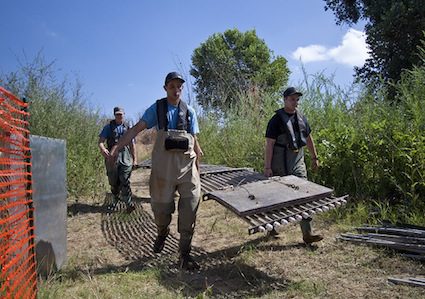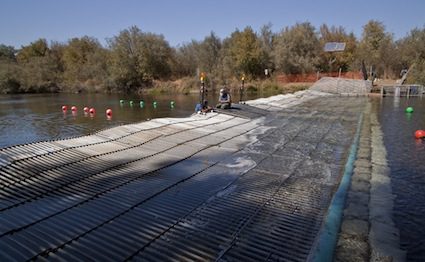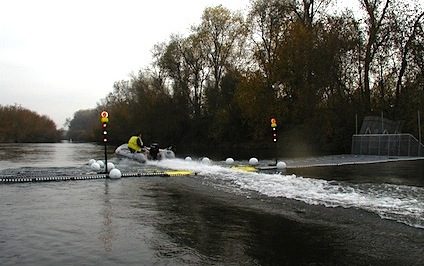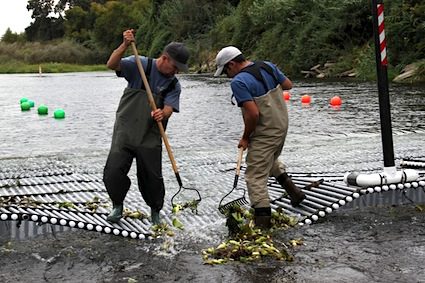Friday September 10, 2010

How do you count adult salmon migrating upriver to spawn if they don’t pass a fish ladder on their journey? We went looking for an answer to that question nearly ten years ago and we found our solution in Alaska, where portable resistance board weirs were already in use. Floating weirs create a temporary barrier in a channel and direct migrating fish through a single opening where they can be enumerated. The portable nature of modular panels makes the weir relatively easy to install and remove. We recently installed a weir on the Stanislaus River in one day, and now we are set to begin our 8th year of monitoring.

A resistance board weir consists primarily of an array of rectangular panels made of evenly spaced PVC pickets aligned parallel to the direction of flow. The upstream end of each panel is hinged to a rail that is anchored to the substrate and the downstream end of the panel is lifted above the surface by a resistance board that planes upward in flowing water. When all components are installed, the resulting barrier inhibits fish from migrating upstream except through the passing chute, yet allows water to pass. A passing chute on one of the panels guides fish into a livebox where they can be visually counted, electronically counted or captured, before being allowed to pass upstream.

Alaskan weirs are ideal for use in navigable rivers with variable flow. Because the Stanislaus River is a navigable waterway and is frequently used for recreation, we were required to make the weir passable by boat. The Stanislaus River weir has a boat passage area where specially designed resistance panels allow boats to pass either upstream or downstream over the weir. We also provide portage access small watercraft can be carried around the weir.

A floating resistance board weir is also easy to clean and maintain because the upstream end of the weir is attached to the river bottom and the downstream floating end collapses under the weight of a person or two. Debris, sometimes as large as a 50 foot log, can be passed down river without interrupting fish monitoring operations.
Photo source: FISHBIO
